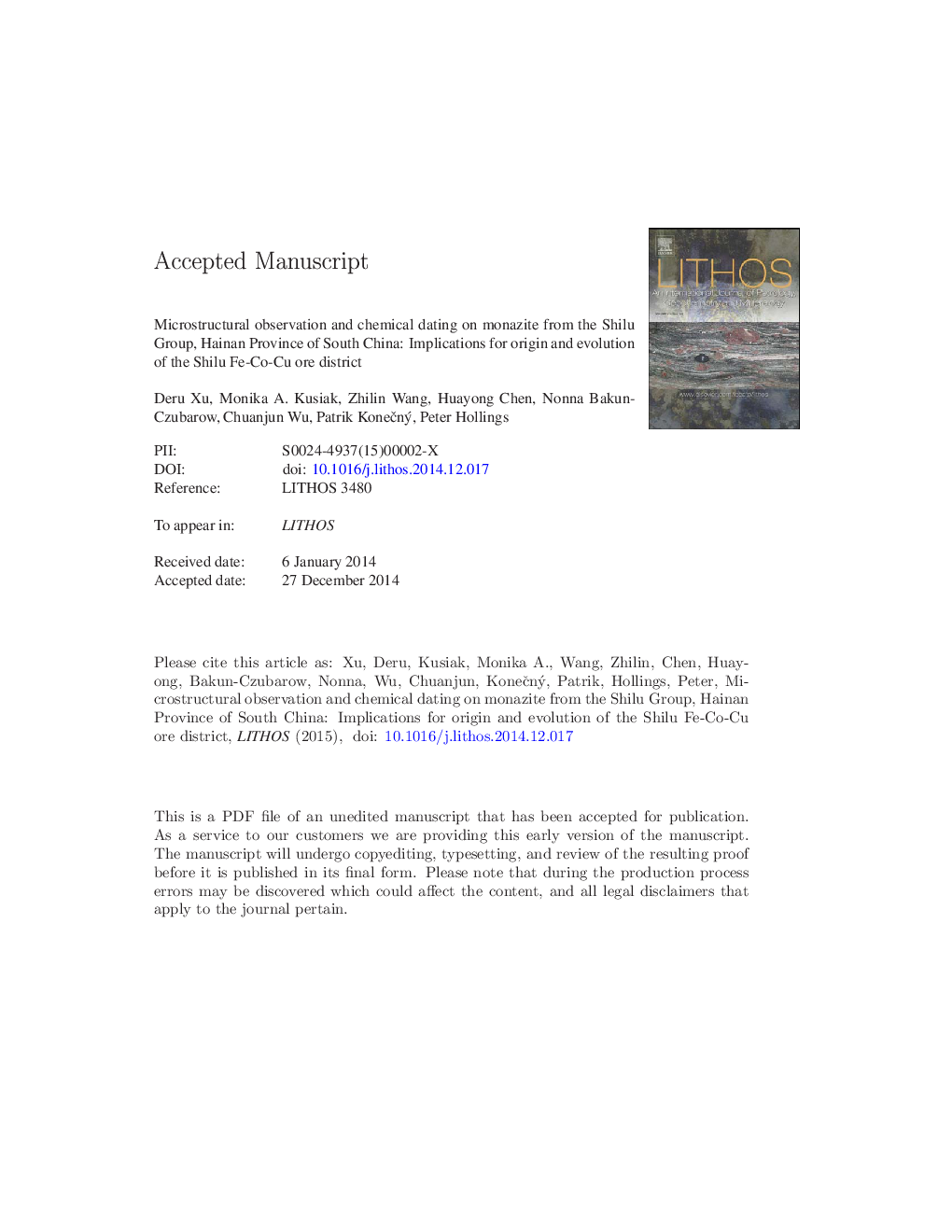| Article ID | Journal | Published Year | Pages | File Type |
|---|---|---|---|---|
| 6440769 | Lithos | 2015 | 62 Pages |
Abstract
New monazite chemical U-Th-total-Pb (CHIME) ages, combined with microstructural observations, mineral compositions, and whole-rock geochemistry, indicate that the large-scale, banded iron formation (BIF)-type Shilu Fe-Co-Cu ore district in Hainan Province, South China is a multistage product of sedimentation, metamorphism, and hydrothermal-metasomatic alteration associated with multiple orogenies. Two types of monazite, i.e. “polygenetic” and “metamorphic”, were identified. The “polygenetic monazite” comprises a magmatic and/or metamorphic core surrounded by a metamorphic rim, and shows complex zoning. Breakdown corona structure, with a core of monazite surrounded by a mantle of fluorapatite, allanite, and/or epidote as concentric growth rings, is commonly observed. This type of monazite yielded three main CHIME-age peaks at ca. 980Â Ma, ca. 880Â Ma and ca. 450Â Ma. The ages which range up to ca. 880Â Ma for detrital cores, record a pre-deformational magmatic and/or metamorphic event(s), and is considered to be the depositional time-interval of the Shilu Group and interbedded BIFs in a marine, back-arc foreland basin likely due to the Grenvillian or South China Sibao orogeny. After deposition, the Shilu district was subjected to an orogenic event, which is recorded by the syndeformational metamorphic monazite with ca. 560-450Â Ma population. Probably this event not only caused amphibolite facies metamorphism and associated regional foliation S1 but also enriched the original BIFs, and most likely corresponds to the “Pan-African” and/or the South China Caledonian orogeny. The post-deformational “metamorphic” monazite occurs mostly as inclusions in garnet and shows ca. 260Â Ma age. It likely represents the Late Permian post-magmatic hydrothermal and related retrograde event(s) initiated by the Indosinian orogeny due to the closure of the Paleo-Tethys. The breakdown of monazite to secondary coronal mineral phases as well as the Fe-remobilization and associated skarnization of the Shilu BIF ore source rocks might also be induced during this retrograde greenschist-facies metamorphism.
Related Topics
Physical Sciences and Engineering
Earth and Planetary Sciences
Geochemistry and Petrology
Authors
Deru Xu, Monika A. Kusiak, Zhilin Wang, Huayong Chen, Nonna Bakun-Czubarow, Chuanjun Wu, Patrik KoneÄný, Peter Hollings,
